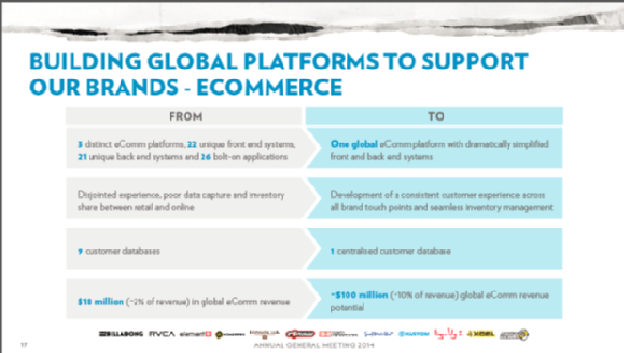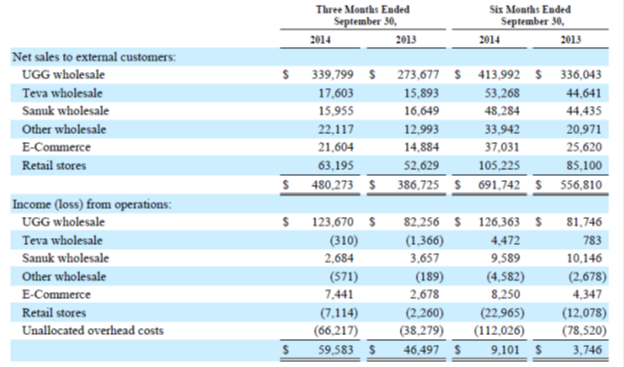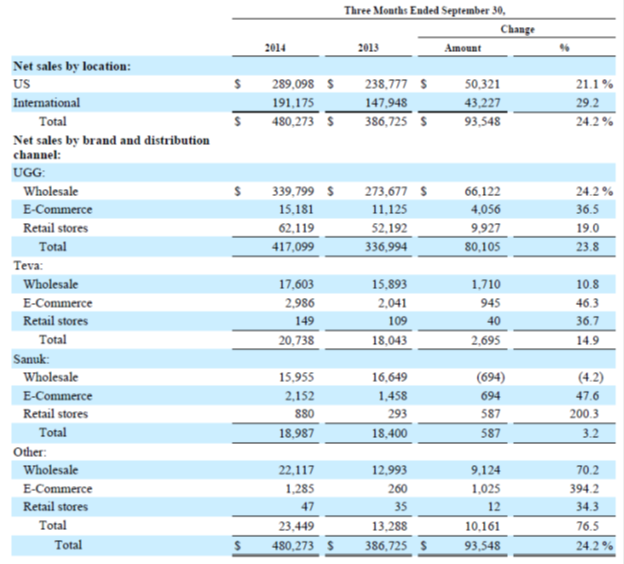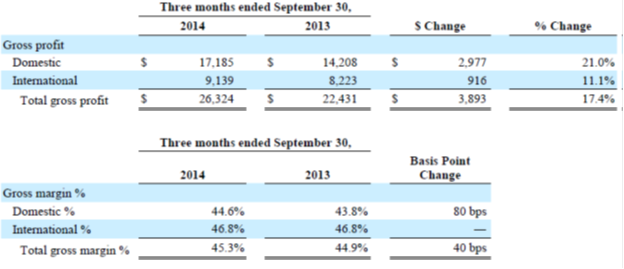Here are the 2 presses releases from today on the deal.
Altamont Capital Partners Leads Majority Recapitalization of Fox Head, Inc.
Palo Alto, Calif., Dec. 10, 2014 – Altamont Capital Partners (Altamont) today announced it is leading a majority recapitalization of Fox Head, Inc. (Fox), the number one global motocross equipment, apparel and accessory brand. The current owners of the business, the founding Fox family, will continue to own a significant minority interest in the company. The transaction is expected to close in the next 7-10 days.
In addition to Altamont and the Fox family, the shareholder group participating in the deal includes Ricky Carmichael, the most successful motocross rider of all time and Fox athlete since 1988; Carey Hart, freestyle motocross legend and Fox athlete since 1997; and Hybrid Apparel, which will also become a strategic supply chain partner to the company. Fox will continue to operate as a private, independent company out of its headquarters in Irvine, California.
“With deep roots in motocross history, the Fox family has built a strong, authentic brand that consumers trust and respect, proven by decades of success,” said Keoni Schwartz, Co-Founder and Managing Director of Altamont Capital Partners. “Altamont is thrilled to have the opportunity to apply our expertise to help Fox continue to grow and reach its longer-term goals.”
The Fox brand was founded by Geoff Fox in 1974 as a distributor and manufacturer of high-performance motocross parts and within three years boasted top-ranked professional motocross team. Hand-selected by Geoff Fox, the team’s apparel became increasingly popular with fans, leading to Fox’s emergence as a successful player in the U.S. motocross apparel industry. Fox is now the most recognized and best-selling brand of motocross apparel, boots and accessories in the world. The brand has since expanded its activities into MTB, BMX, surf and wakeboarding and has become an international leader in action sports.
“I have never been more optimistic about the future of the brand or the business,” said Geoff Fox, Founder of Fox Head, Inc. “We’re excited to work with Altamont as we prepare for a new chapter in our story. I’m confident that Altamont’s strategic advice and relevant experience guiding brands to reach their full potential will allow Fox to strengthen its business while preserving the integrity of the brand.”
Today Fox also announced changes to its management team, including the appointment of Pete Fox as the company’s Chief Creative Officer. Additionally, Nick Adcock, CEO, and Bill Bussiere, CFO, will leave the company to pursue other opportunities. Scott Olivet, who will be Executive Chairman on an ongoing basis, will become Interim CEO while executive searches are underway. Olivet has extensive experience in the action sports industries, having served as VP of Nike Subsidiaries, where he led the acquisitions of Hurley and Converse; as the CEO of Oakley Inc.; and as a current Director of Skullcandy. He is also an Operating Partner at Altamont Capital Partners and serves as Chairman of the Board of Dakine, Mervin, HUF and Brixton.
“I want to thank Nick Adcock and Bill Bussiere for their leadership, focus and accomplishments in helping to build a solid business. I wish them well on their next endeavor,” said Geoff Fox. “With Pete rejoining the team and a partnership with Altamont to support the ambitions of the business, Fox is poised for a very bright future.”
“The Fox team has done a tremendous job the last few years weathering a challenging market and positioning itself for the future,” said Scott Olivet. “The Fox brand is authentic and relevant across anumber of action sports so we are in the enviable position of being able to choose from a range of growth opportunities. But it’s clear that building on our leadership in motocross will always be our first priority. We will be focused on gaining leadership in product categories where we are not currently number one, increasing the pace of innovation for our consumers, and harnessing our innovation, technologies and athlete and brand stories to serve the market in a compelling way. I’m honored to be part of what Geoff, Greg, Pete, Josie, Anna and John Fox have built over 40 years and to help write the next chapter of success.”
About Altamont Capital Partners
Altamont Capital Partners is a private investment firm based in the San Francisco Bay Area with over $1 billion of capital under management. Altamont is focused on investing in middle market businesses where it can partner with leading management teams to help its portfolio companies reach their full potential. The firm’s principals have significant experience building business success stories across a range of industries including financial services, government services, consumer/retail, industrials and healthcare.
About Fox Head, Inc.
Founded in 1974, Fox Head Inc. is the leading designer, marketer and distributor of authentic motocross apparel and equipment for the world’s best riders. Fox is a privately held company with offices in Irvine, CA; Morgan Hill, CA; Calgary, Alberta, Canada; and Barcelona, Spain.
For more information, visit www.foxhead.com and follow @foxheadinc.
Contact:
Brunswick Group on behalf of Altamont
Altamont@Brunswickgroup.com
(415) 671-7679
Fox Head Appoints Pete Fox as Chief Creative Officer
Irvine, Calif., Dec. 10, 2014 – Fox Head, Inc., the number one motocross equipment, apparel and accessory brand, today announced that Pete Fox will rejoin the company in the newly created role of Chief Creative Officer (CCO). Fox will report directly to Interim CEO Scott Olivet with his appointment being effective immediately.
Formerly the company’s President and CEO, Pete Fox is rejoining the business in an executive management capacity with responsibility for the creative direction of the brand. As CCO, he will directly manage the Design, Marketing and Sports Marketing teams. In addition to his new role at the company, Pete will be a substantial minority investor and will maintain his seat on the Board of Directors.
“I have always been passionate about developing high-performance products for our athletes and telling unique brand stories, and I couldn’t be more excited to have the opportunity to focus on it full time,” said Pete Fox. “I’m going to renew my efforts of 28 years to accelerate our innovation, focus our brand message and sharpen our storytelling. The newly created CCO position is an ideal fit and will allow me to have the greatest impact on the company. I look forward to working with Scott and the entire leadership team to take Fox to the next level of performance.”
Since joining the company full time in 1986 at the age of 18, Pete Fox has been integral to the brand vision, marketing and design innovation of Fox products, such as the 360 Racepant, V-Series of motocross helmets and the revolutionary Instinct boot. In addition, Pete directed all marketing campaigns and has recruited and worked closely with the biggest names in motocross – Rick Johnson, Doug Henry, Jeremy McGrath, Jeff Emig, Ricky Carmichael, James Stewart, Ryan Dungey, Chad Reed and Ken Roczen.
For more than 40 years, the world’s best riders have turned to Fox for cutting-edge MX performance gear.
“With our new partner’s long-term perspective and additional financial resources, we are going to maintain our focus on our athletes and core riders and significantly ramp up the pace of innovation,” continued Fox. “We have incredible insights into the needs of athletes across all product categories, including racewear, boots, helmets and body armor. Our customers and retailers are telling us they want more and they want it faster and we intend to deliver on this request.”
“Fox is at an exciting juncture in its history and is poised for growth,” said Executive Chairman and Interim CEO Scott Olivet. “Pete is passionate about the brand, our athletes, our customers and our employees. We are thrilled that he will be leading the company’s creative direction, focusing on innovation and creating a bigger brand voice. Over his long career with Fox, Pete has held many roles, including Creative Director, Co-President and CEO. During that time, he gained key insights into the needs of motocross riders, created invaluable relationships throughout the industry and developed an intimate knowledge of the brand. Pete is a truly creative mind who will add immediate value to product innovation and play an integral role forming the next phase in the company’s evolution.”
About Fox Head, Inc.
Founded in 1974, Fox Head Inc. is the leading designer, marketer and distributor of authentic motocross apparel and equipment for the world’s best riders. Fox is a privately held company with offices in Irvine, CA; Morgan Hill, CA; Calgary, Alberta, Canada; and Barcelona, Spain.
For more information, visit www.foxhead.com and follow @foxheadinc.
Contact:
Brunswick Group on behalf of Altamont
Altamont@Brunswickgroup.com
(415) 671-7679







